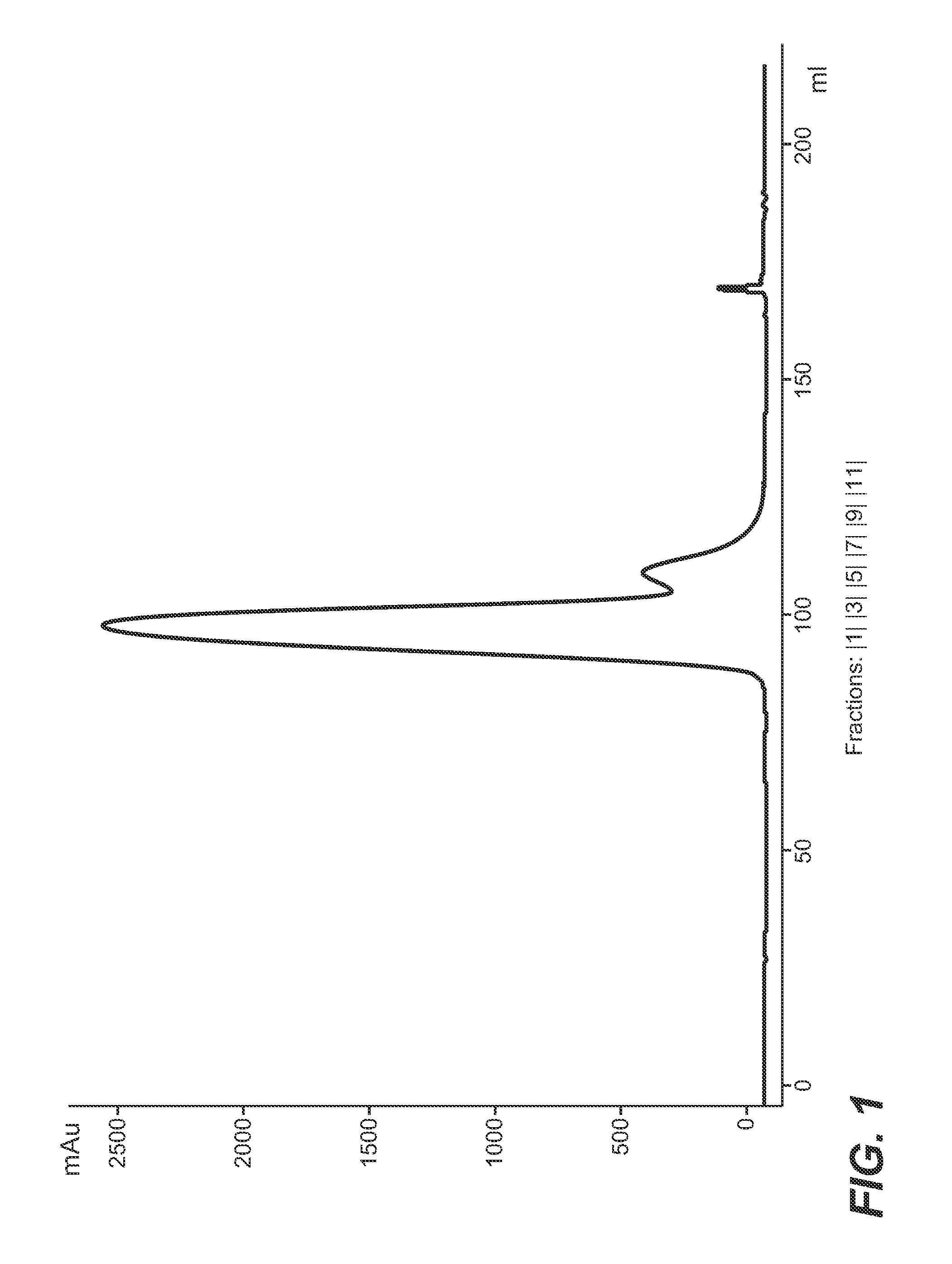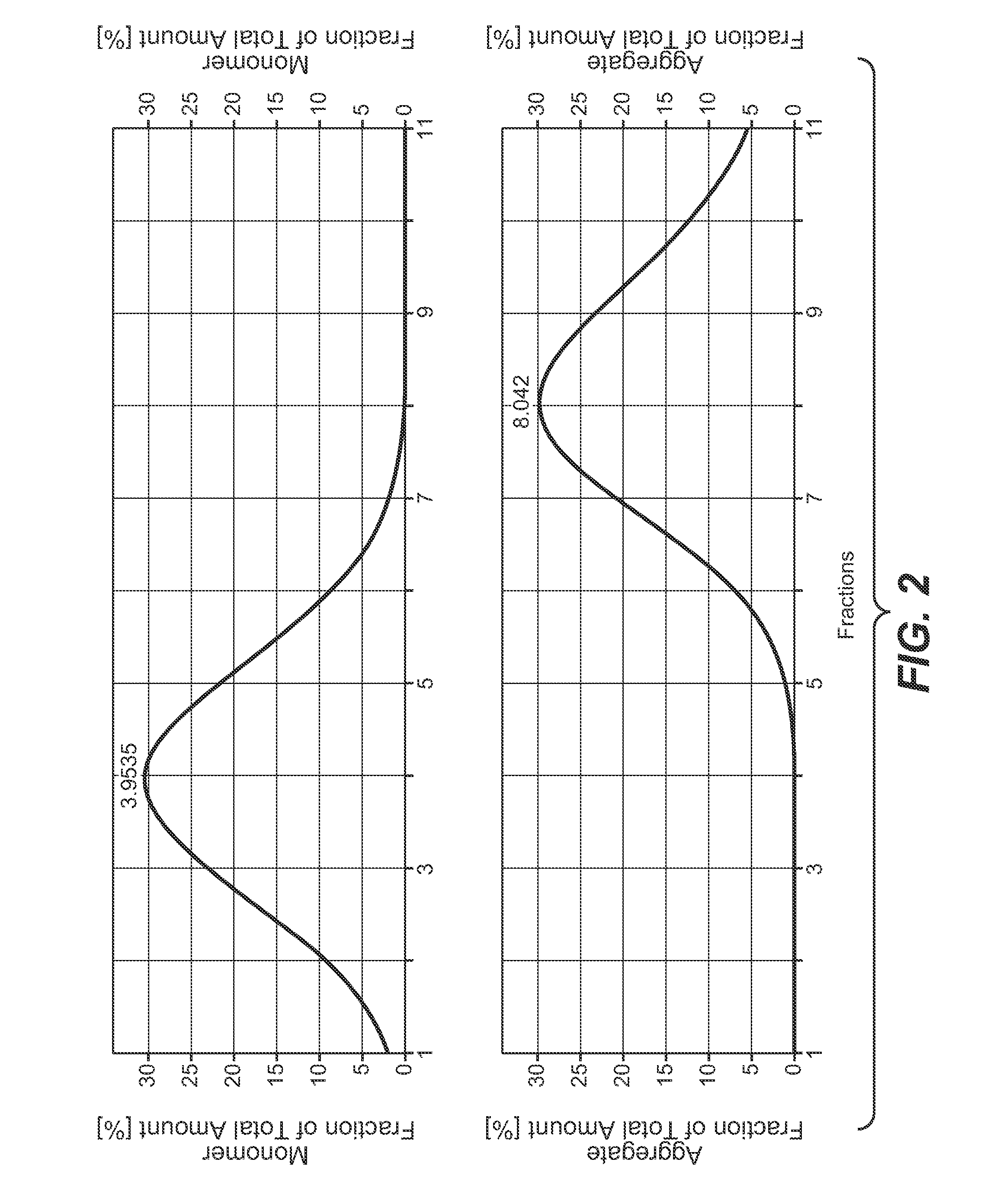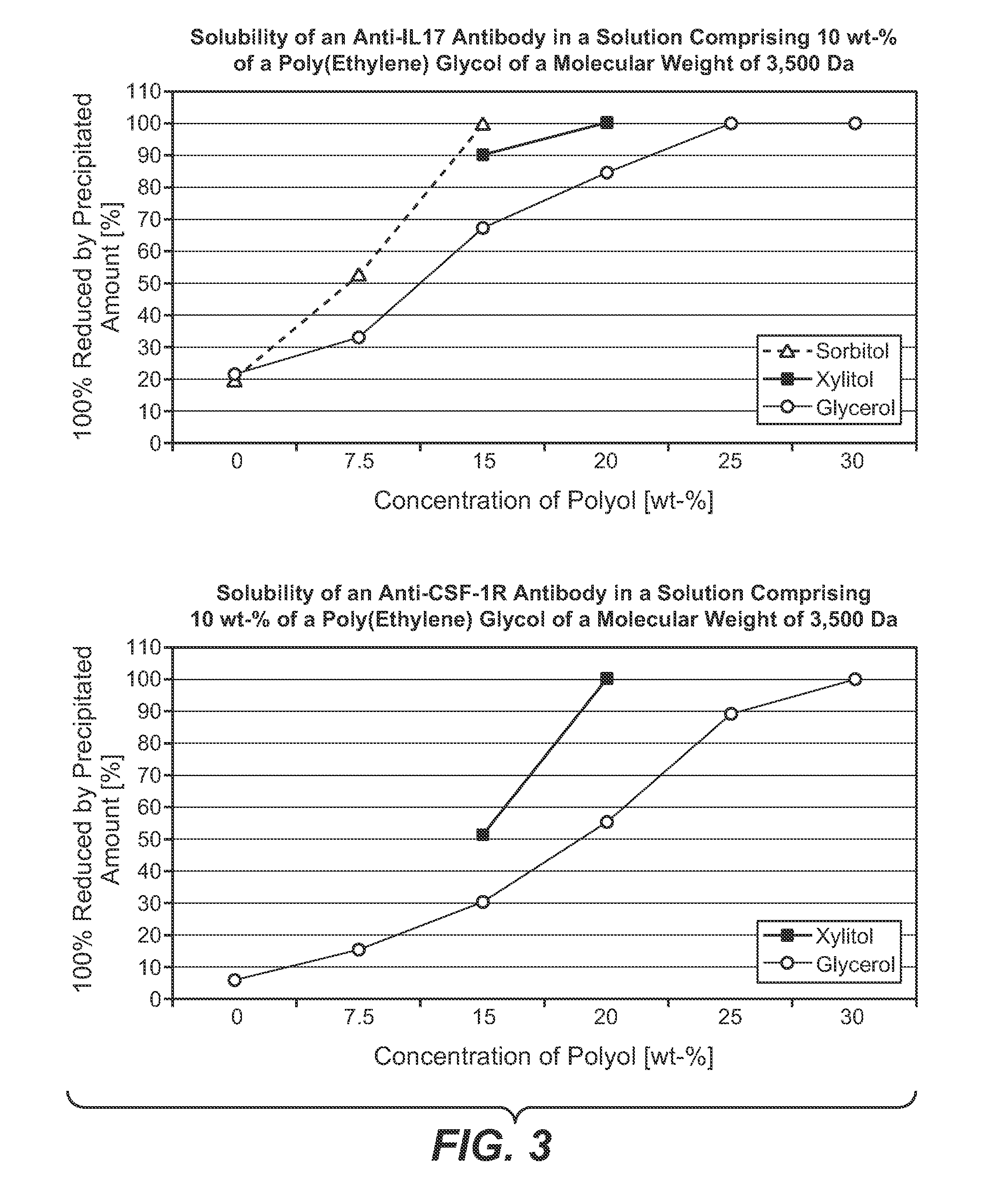Ion Exchange Chromatography with Improved Selectivity for the Separation of Polypeptide Monomers, Aggregates and Fragments by Modulation of the Mobile Phase
- Summary
- Abstract
- Description
- Claims
- Application Information
AI Technical Summary
Benefits of technology
Problems solved by technology
Method used
Image
Examples
example 1
Chromatography Conditions:
[0214]Polypeptide: anti-IL17 antibody[0215]Exchange material: Poros 50HS[0216]Column: 8 mm internal diameter, 100 mm length, 5.03 ml volume[0217]Flow rate: 90 cm / h (=0.75 ml / min)[0218]Equilibration solution: 10 mM sodium citrate buffer, adjusted to pH 5.0, 4 column volumes[0219]Loading: 20 g protein / 1 chromatography material[0220]Wash solution 1: 10 mM sodium citrate buffer, adjusted to pH 5.0, 1 column volume[0221]Wash solution 2: 10 mM sodium citrate buffer, 10% (w / w) poly (ethylene glycol) (MW 3,500 Da), 15% (w / w) D-sorbitol, adjusted to pH 5.0[0222]Elution solution: 10 mM sodium citrate buffer, 10% (w / w) poly (ethylene glycol) (MW 3,500 Da), 15% (w / w) D-sorbitol, comprising 750 mM sodium chloride, adjusted to pH 5.0[0223]Elution method: linear gradient from 0% (v / v) to 100% (v / v) elution solution in 22.5 column volumes
[0224]The conditioned protein A eluate was applied to a chromatography column containing the ion exchange chromatography material. After ...
example 2
Chromatography Conditions:
[0228]Polypeptide: anti-CSF-1R antibody
[0229]The peak containing the antibody was collected in 3 ml fractions, which were analyzed for monomer and aggregate content. The result of the analysis is presented in the following Table.
TABLEconcentrationanti-antibodyantibody(UV280)fractionbodymonomeraggregate[mg / ml]volumeamount(SEC)(SEC)sampleE = 1.47[ml][mg][%][%]conditioned12.97.7199.4899.190.81protein Aeluateflow-through0.00~600.00——fraction 10.993.002.971000fraction 25.843.0017.521000fraction 38.303.0024.901000fraction 47.873.0023.611000fraction 55.673.0017.011000fraction 61.943.005.821000fraction 70.583.001.7494.215.79fraction 80.413.001.2387.7912.21fraction 90.231.500.3584.5815.42amountof CHOamount of CHOHCP based onamount ofHCDNA basedamount ofamount ofCHOon amount ofCHOantibodyHCPantibodyHCDNAsample[ng / mg][ng][pg / mg][pg]conditioned1,260125,3452198.96protein Aeluateflow-throughfraction 111.88fraction 21.5792870.08fraction 316.93fraction 4111.33fraction 52.7...
example 3
Chromatography Conditions:
[0231]Polypeptide: anti-IL17 antibody[0232]Equilibration solution: 35 mM sodium acetate buffer, 10% (w / w) poly (ethylene glycol) (MW 3,500 Da), 15% (w / w) D-sorbitol adjusted to pH 5.0, 4 column volumes[0233]Loading: 20 g protein / 1 chromatography material[0234]Wash solution: 35 mM sodium acetate buffer, 10% (w / w) poly (ethylene glycol) (MW 3,500 Da), 15% (w / w) D-sorbitol adjusted to pH 5.0, 1 column volume[0235]Elution solution: 35 mM sodium acetate buffer, 10% (w / w) poly (ethylene glycol) (MW 3,500 Da), 15% (w / w) D-sorbitol, comprising 750 mM sodium chloride, adjusted to pH 5.0[0236]Elution method: linear gradient from 0% (v / v) to 100% (v / v) elution solution in 22.5 column volumes
[0237]The peak containing the antibody was collected in 3 ml fractions, which were analyzed for monomer and aggregate content as well as for CHO host cell protein content and CHO host cell DNA content. The result of the analysis is presented in the following Table.
TABLEconcentratio...
PUM
| Property | Measurement | Unit |
|---|---|---|
| Fraction | aaaaa | aaaaa |
| Percent by mass | aaaaa | aaaaa |
| Percent by mass | aaaaa | aaaaa |
Abstract
Description
Claims
Application Information
 Login to View More
Login to View More - R&D
- Intellectual Property
- Life Sciences
- Materials
- Tech Scout
- Unparalleled Data Quality
- Higher Quality Content
- 60% Fewer Hallucinations
Browse by: Latest US Patents, China's latest patents, Technical Efficacy Thesaurus, Application Domain, Technology Topic, Popular Technical Reports.
© 2025 PatSnap. All rights reserved.Legal|Privacy policy|Modern Slavery Act Transparency Statement|Sitemap|About US| Contact US: help@patsnap.com



